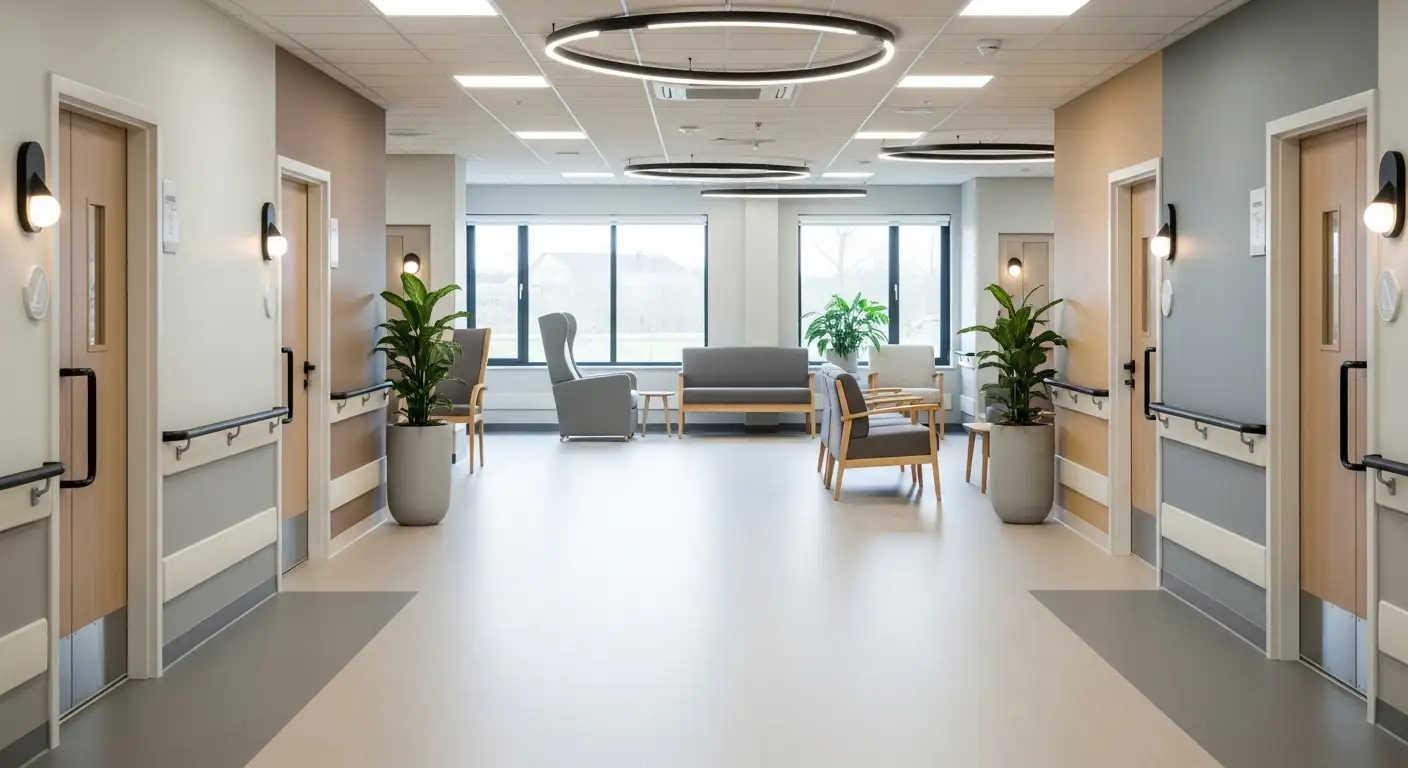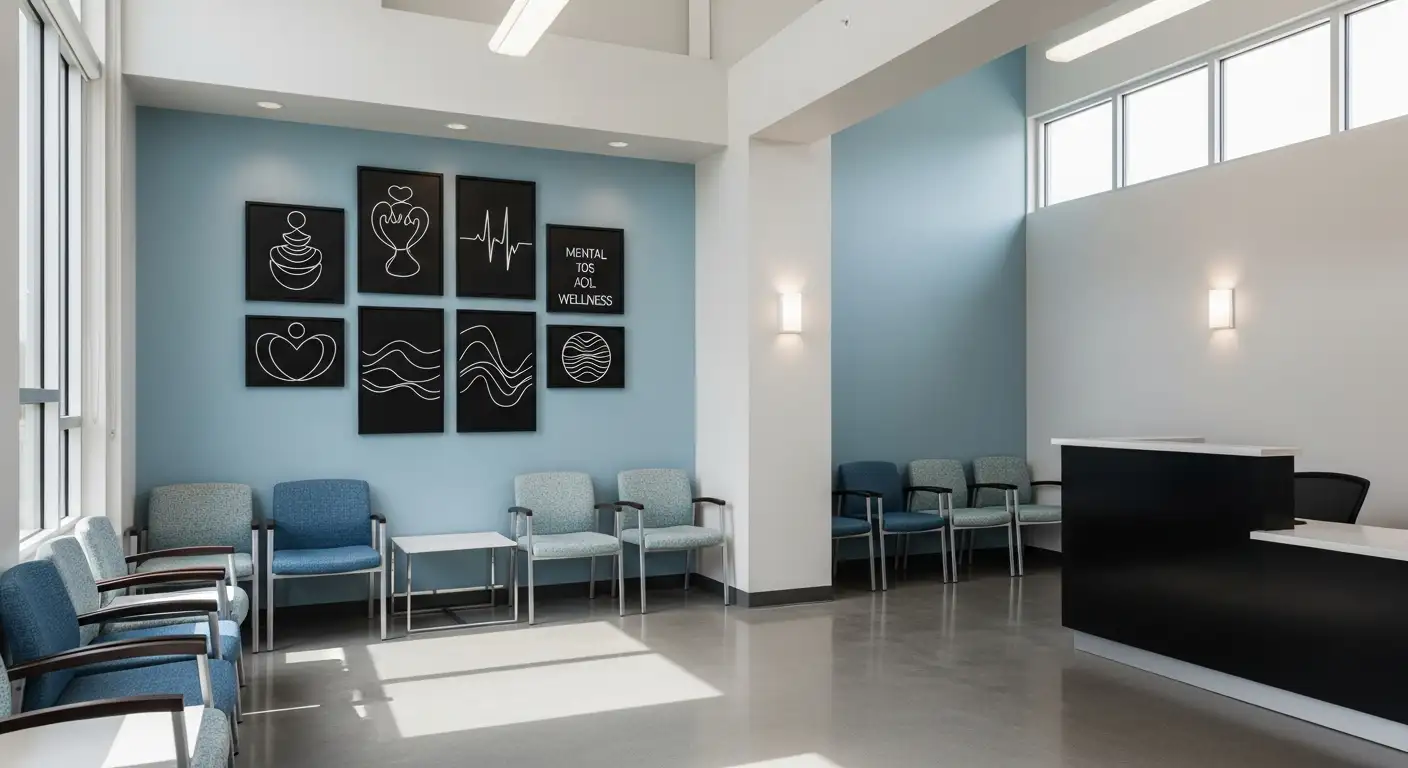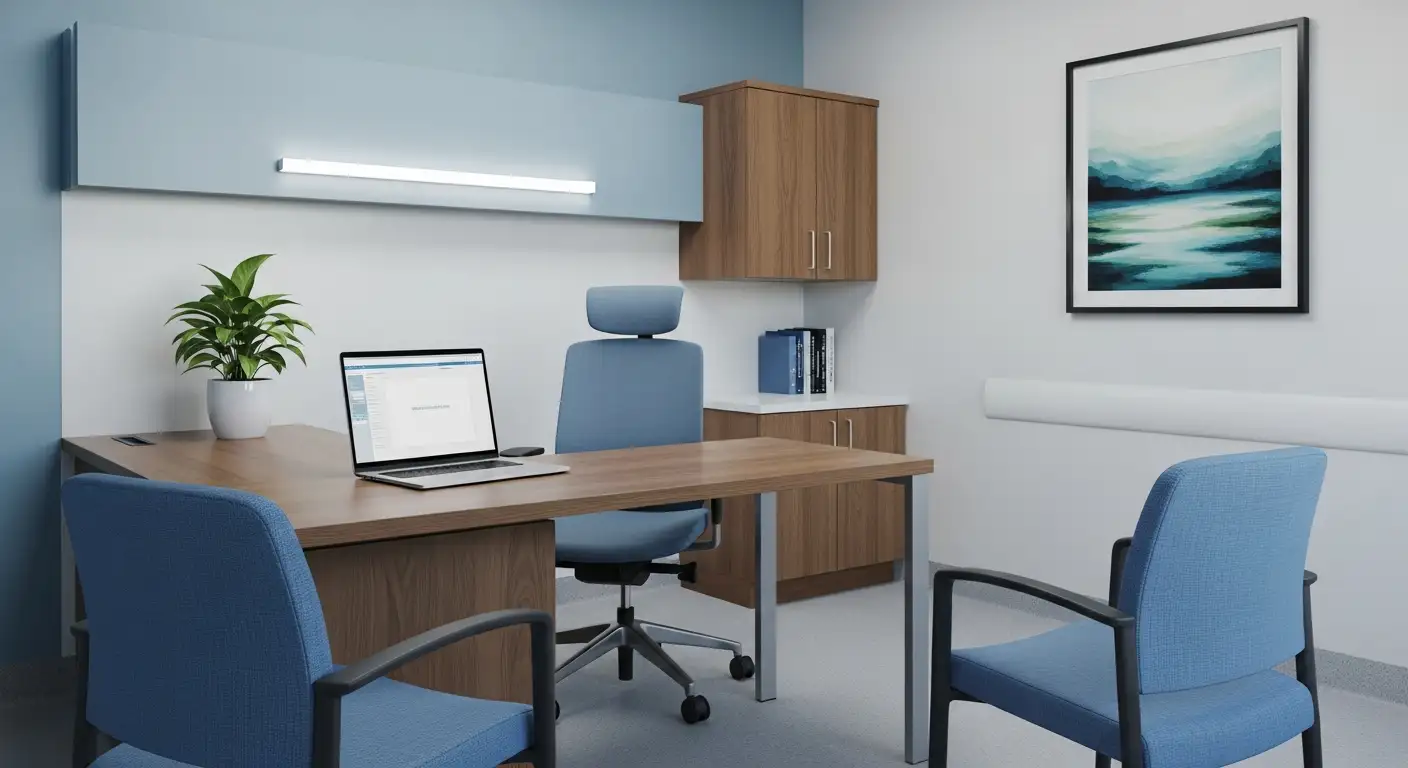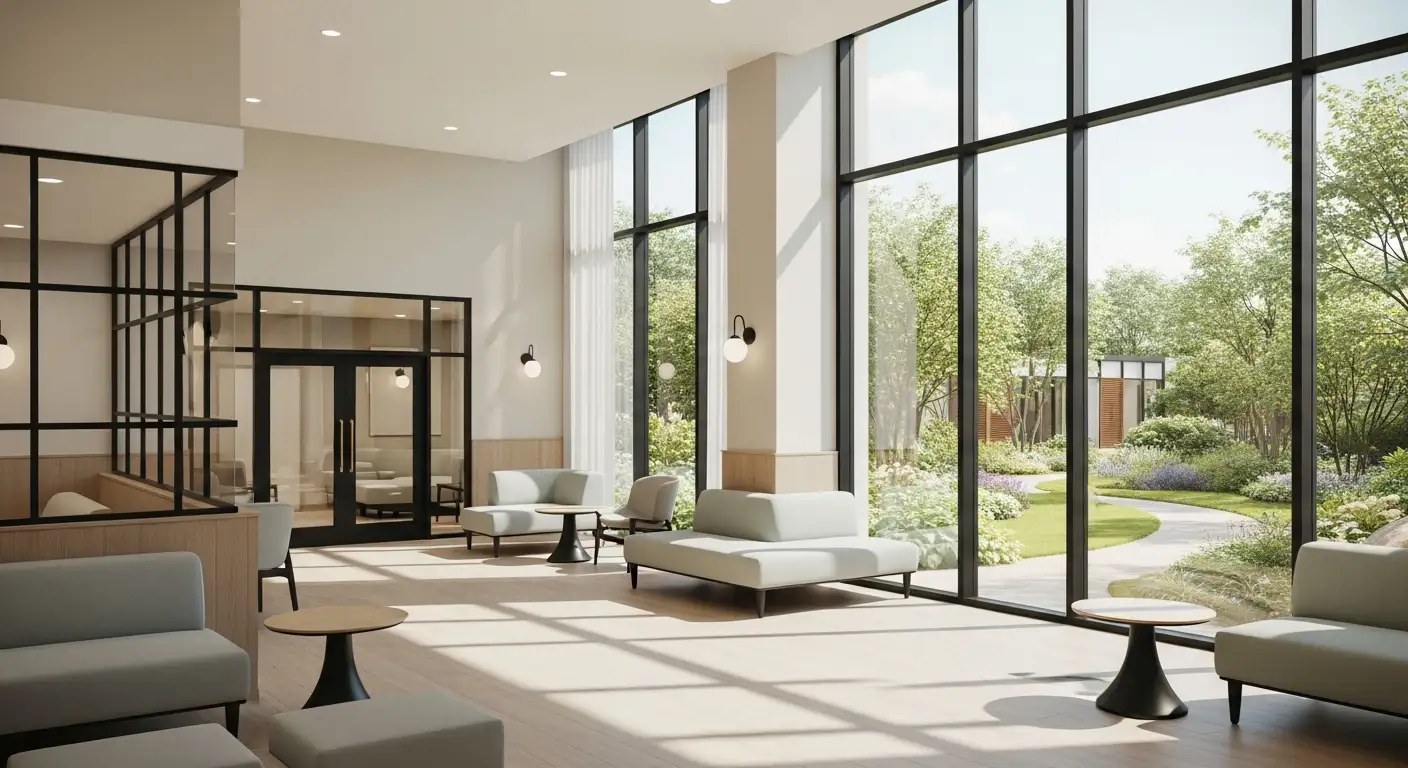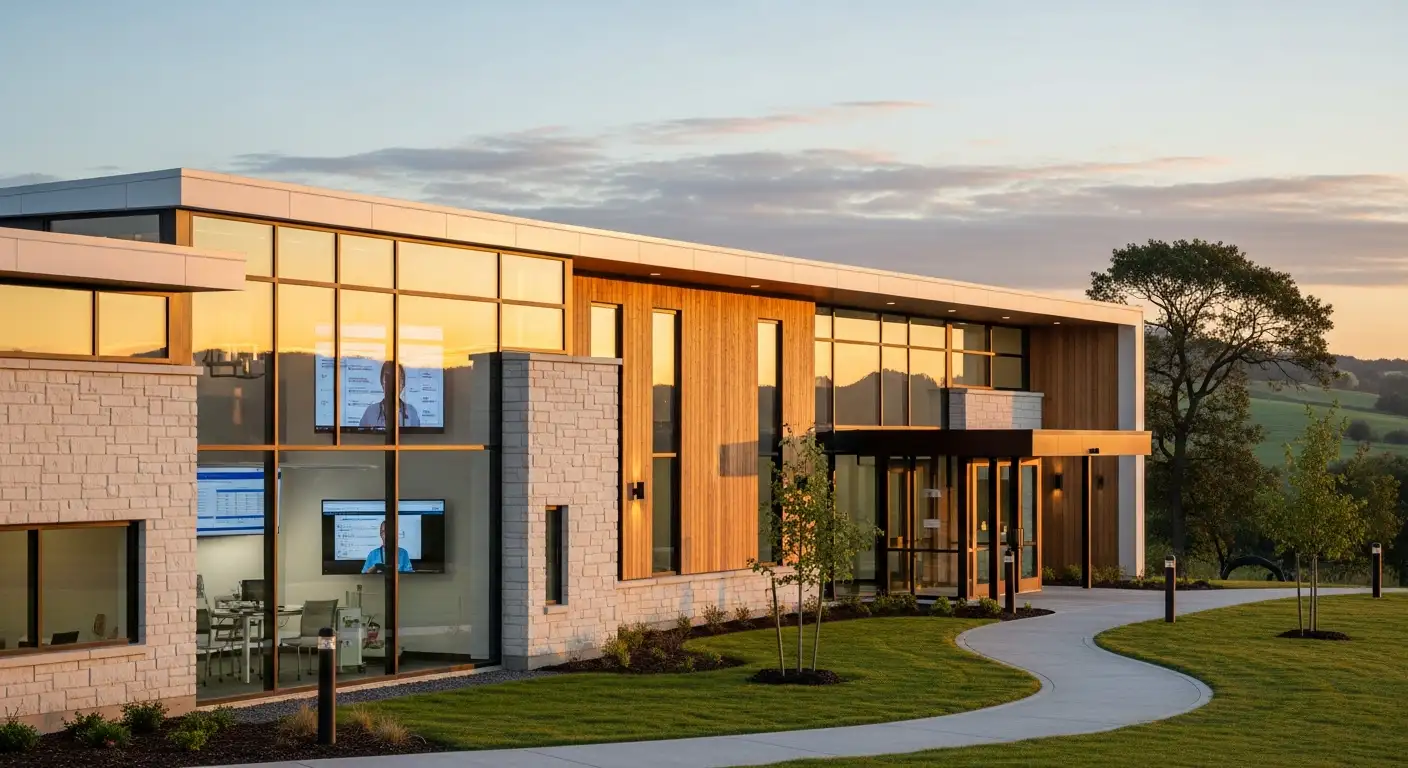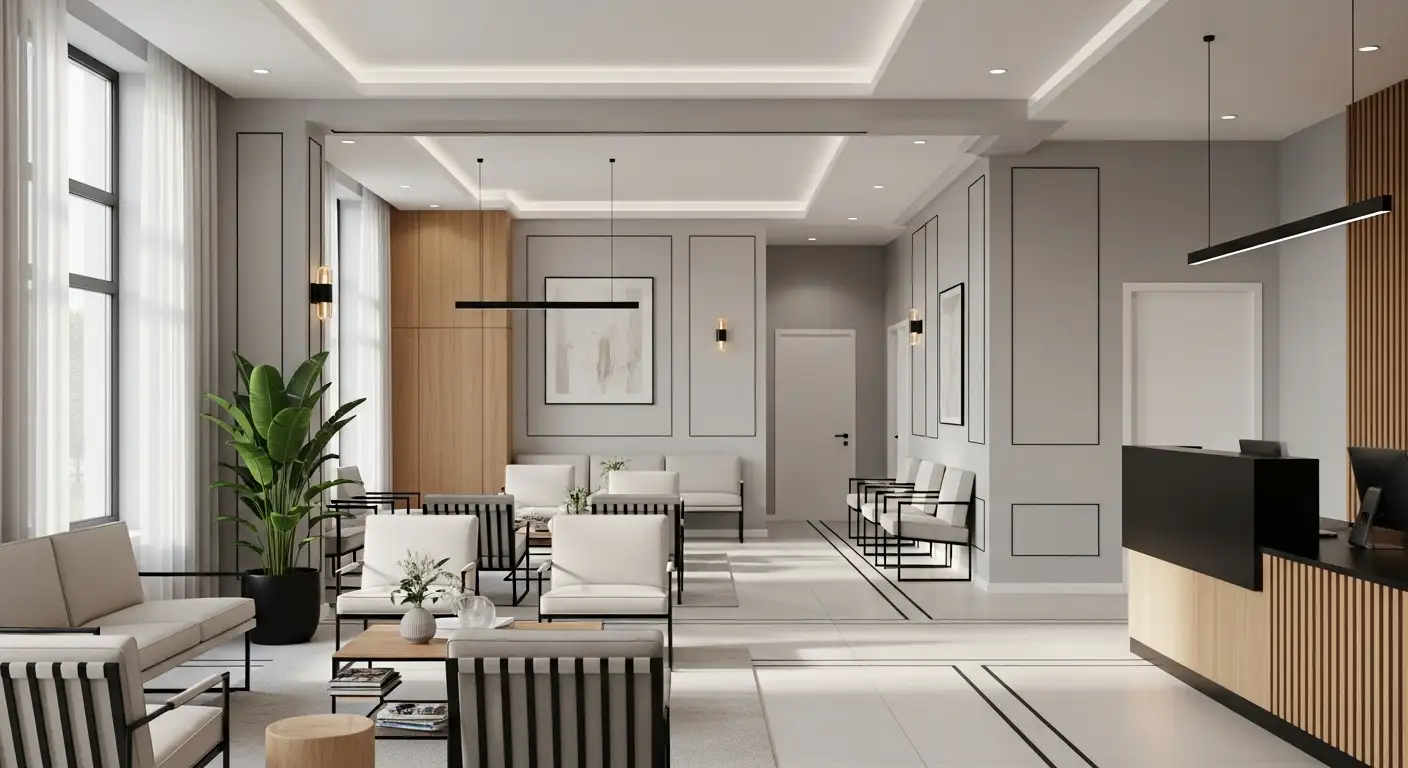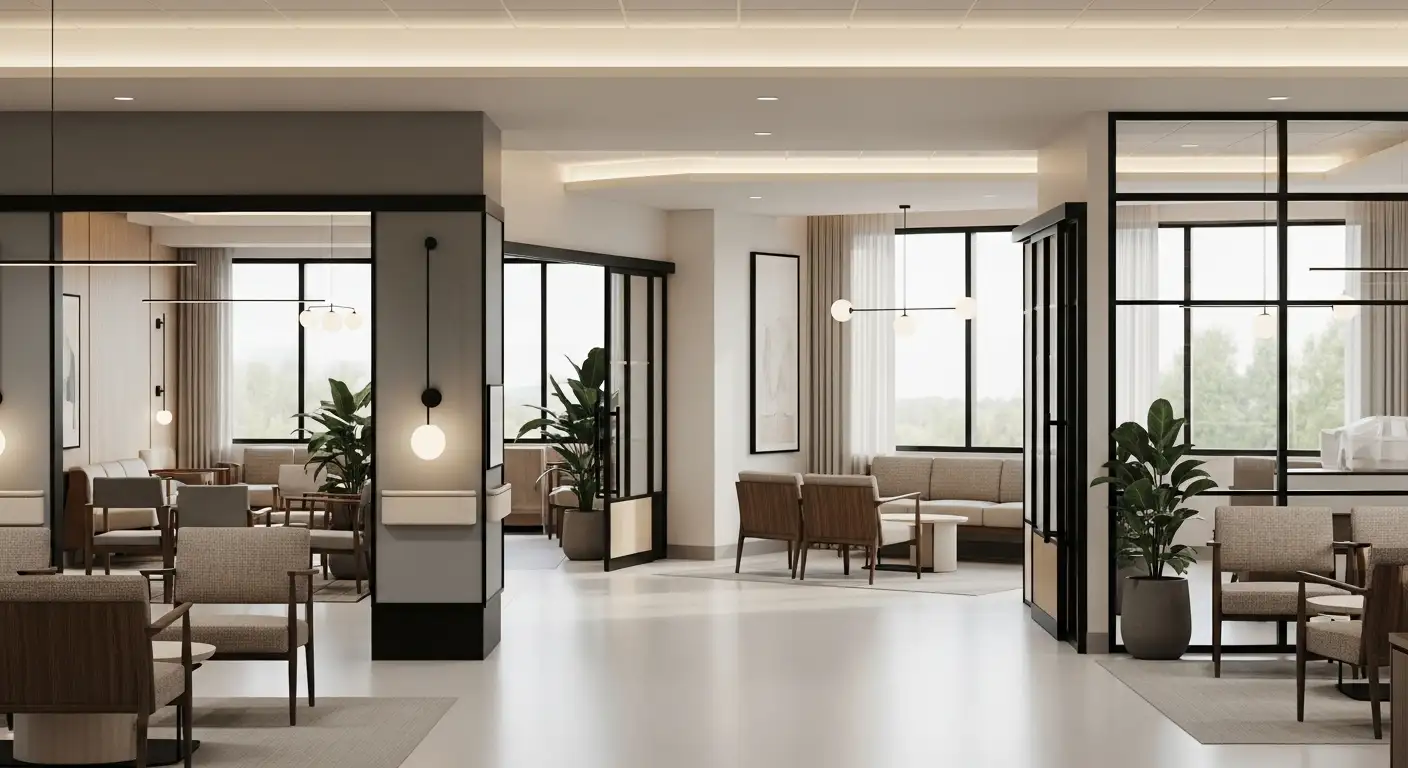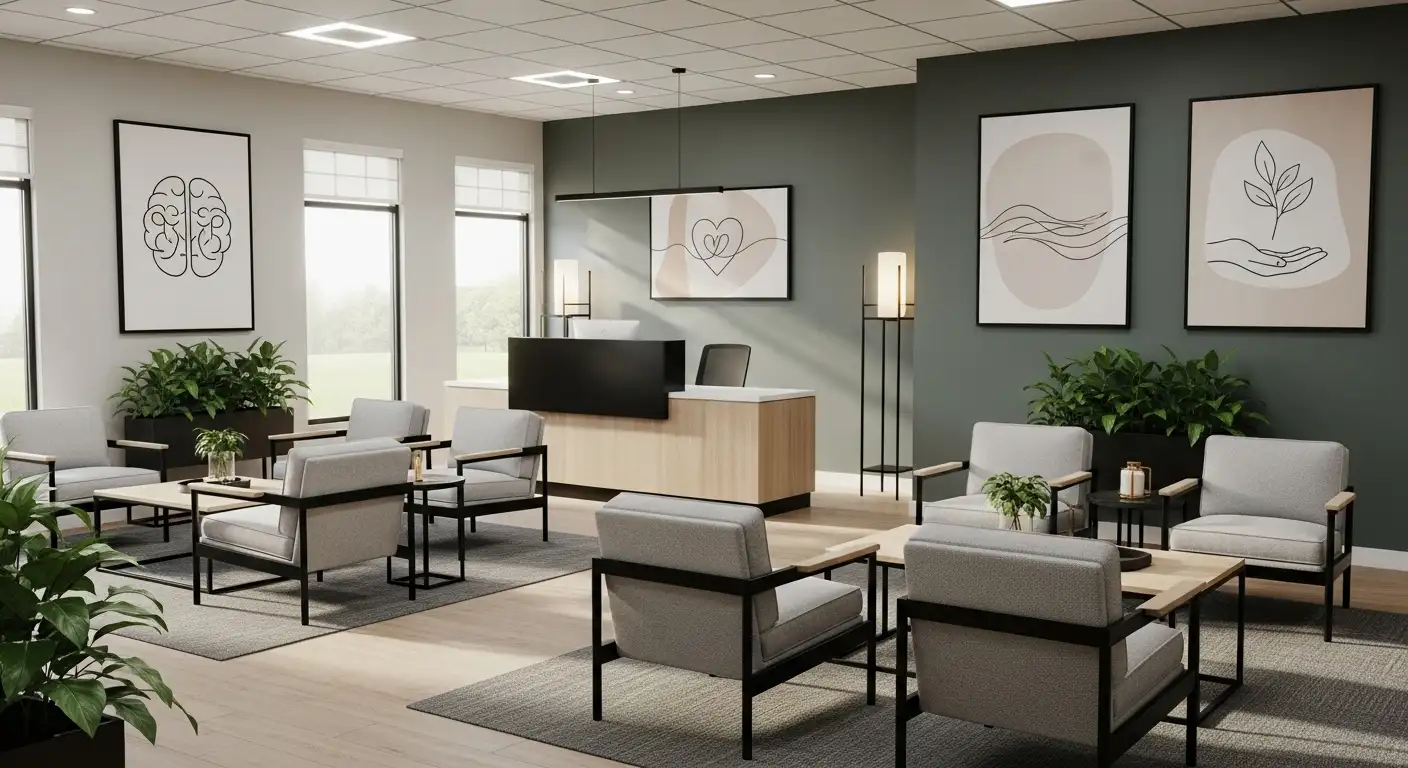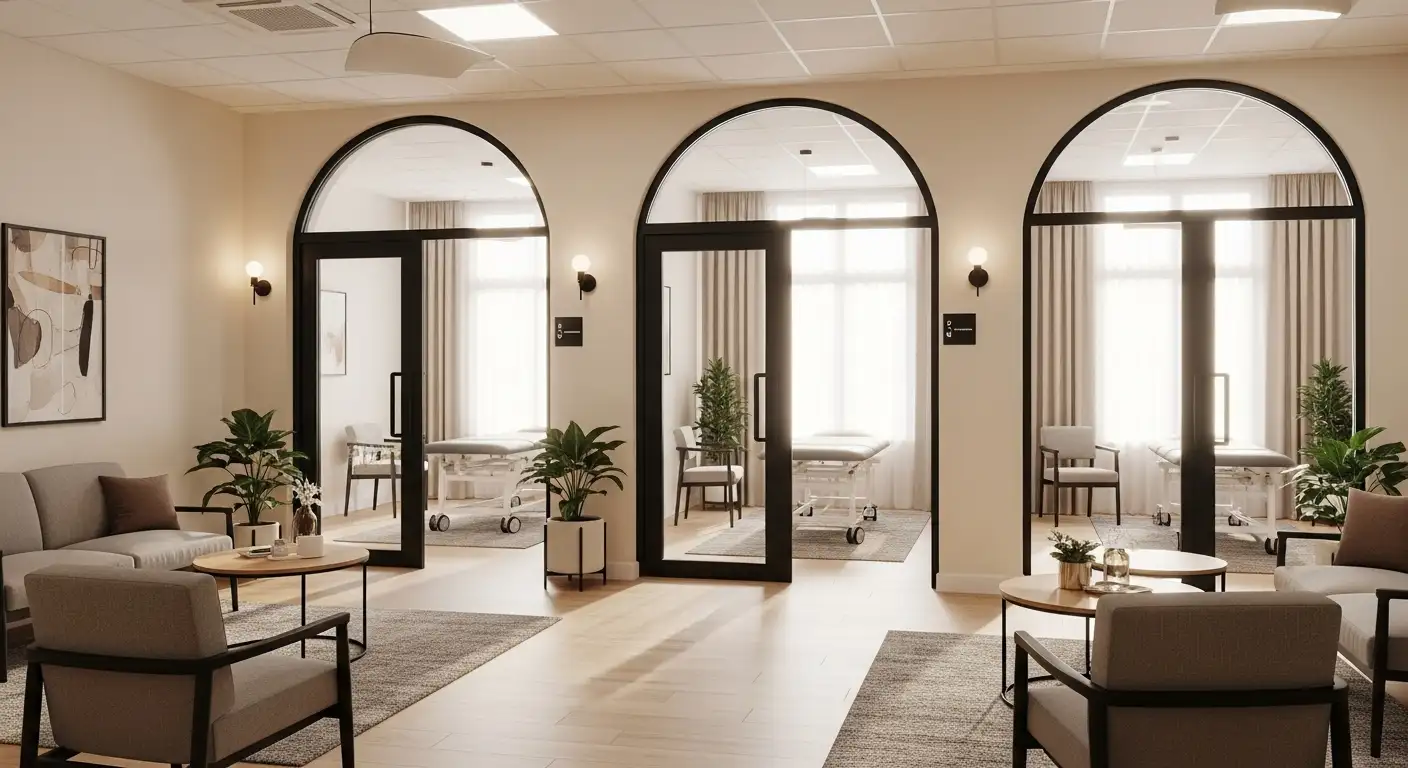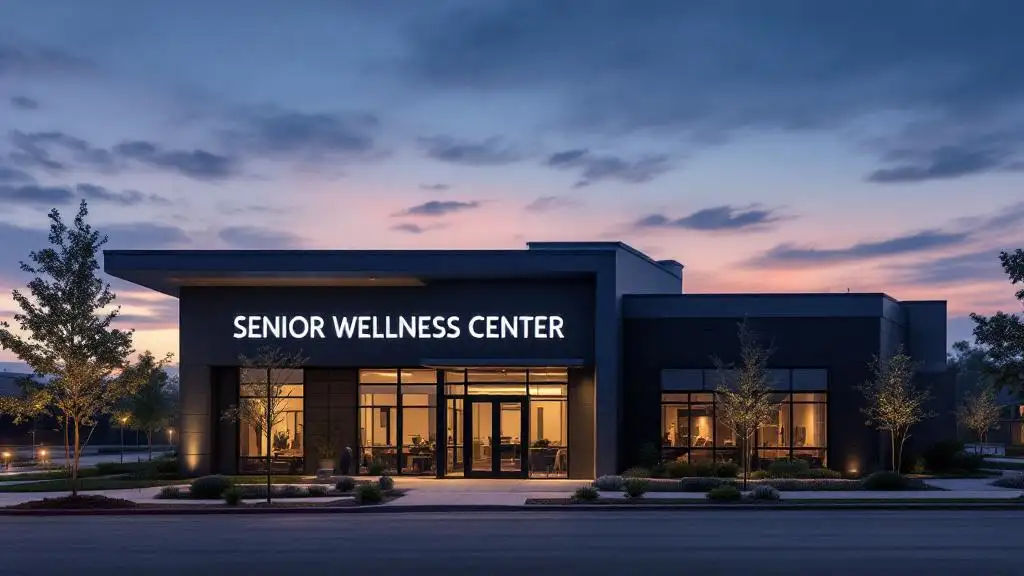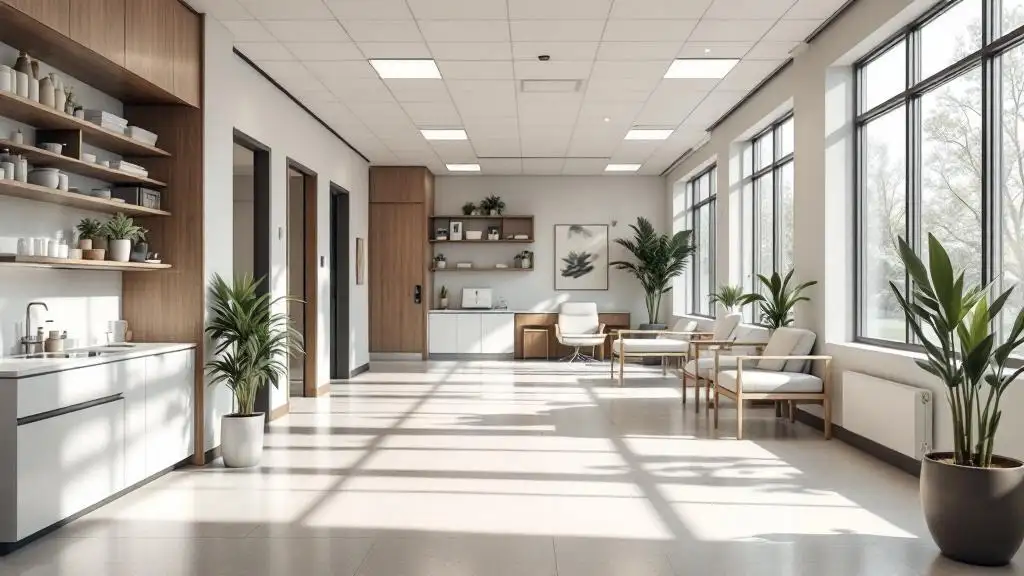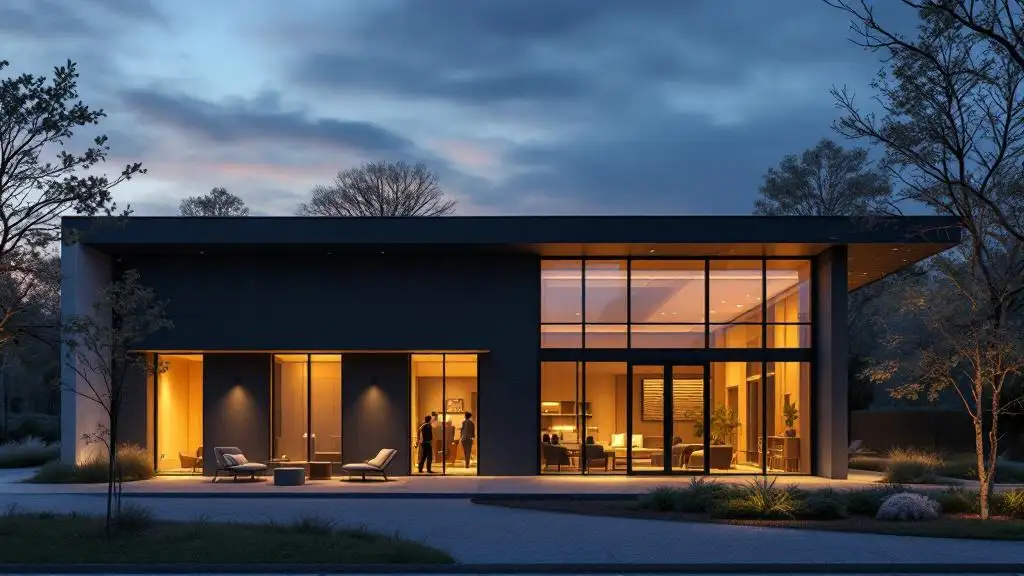Building Safer, More Effective Behavioral Health Environments
Developing facility-wide behavioral health protocols requires adherence to comprehensive standards, innovative design strategies, multidisciplinary collaboration, and ongoing quality improvement. This article explores the essential components, regulatory frameworks, environmental design considerations, emergency management strategies, and community integration practices crucial for establishing effective, safe, and patient-centered behavioral health systems across healthcare facilities.
Standards and Best Practices in Behavioral Health Protocol Development

What are the recognized standards and best practices for developing facility-wide behavioral health protocols?
Developing effective behavioral health protocols requires adherence to established national standards and guidelines. Among these, SAMHSA's National Guidelines for Behavioral Health Care and the 2025 National Guidelines for a Behavioral Health Coordinated System of Crisis Care stand out as comprehensive frameworks.
These guidelines emphasize a systemic approach that incorporates several critical components. For instance, establishing accessible contact points like the 988 Lifeline ensures that individuals in crisis can quickly connect with help. Responsive teams, such as Mobile Crisis Teams, are vital for providing immediate, on-site intervention.
Best practices also highlight the importance of community involvement, ensuring protocols reflect local needs and resources. Consistency across agencies and settings helps foster trust, reliability, and coordination within the system.
Implementation guides derived from these standards offer detailed steps for agencies to develop, customize, and enhance their crisis response procedures. These models support the creation of safe stabilization environments, effective follow-up care, and seamless transitions between services.
Overall, utilizing these recognized standards helps facilities promote timely, equitable, and effective care during behavioral health crises. The goal is to reduce harm, improve outcomes, and support recovery, all within a framework of continuous quality improvement and system-wide collaboration.
| Standard/Guideline | Focus Area | Practical Application |
|---|---|---|
| SAMHSA's National Guidelines | Mental health care quality and safety | Establishing treatment protocols, staff training, and crisis response strategies |
| 2025 National Guidelines | Crisis system coordination | Developing community-based crisis services, defining roles, and system integration |
| Community-Informed Protocols | Local needs assessment | Ensuring protocols are adapted to community characteristics and available resources |
| Implementation Guides | Practical steps | Providing detailed frameworks for policy development, staff training, and quality improvement |
Frameworks and Structured Approaches for System Development
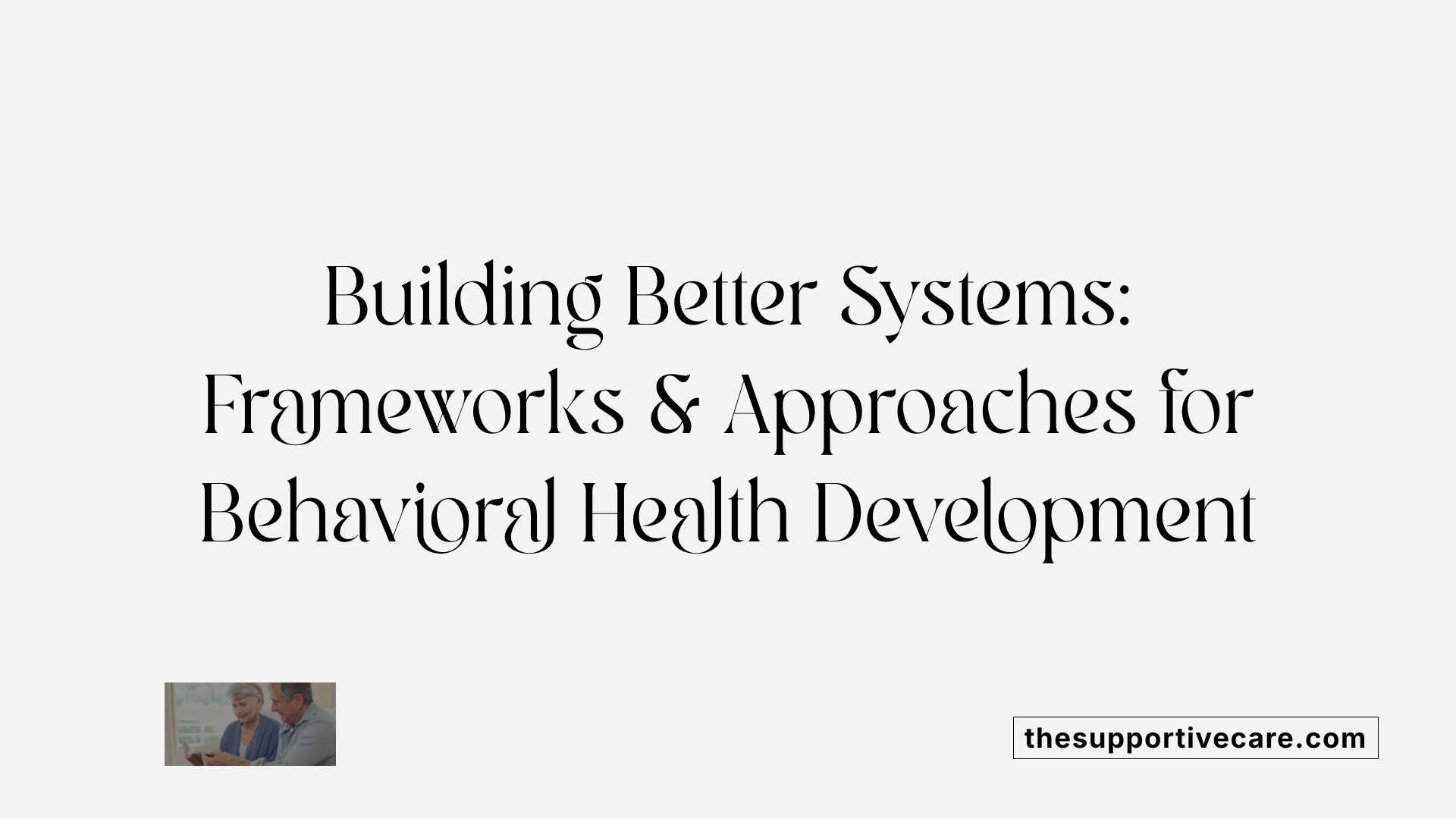
What frameworks and structured approaches are used for developing behavioral health systems?
Developing effective behavioral health systems requires structured approaches that emphasize measurement, accountability, and integration. One prominent example is the Behavioral Health Quality Framework, which is adapted from the Applegate Alignment Model. This framework promotes a systematic strategy that aligns quality measures across multiple levels of the health system, from patient care to policy implementation.
The framework encourages healthcare organizations to set clear population health goals and measure outcomes consistently. It advocates for stakeholder collaboration, including providers, patients, and policymakers, to create a shared understanding of quality standards. These measures enable transparent benchmarking, fostering continuous improvement.
Federal programs play a significant role by using diverse, often nonstandardized measures. Recognizing this variability underscores the need for a unified measurement system that can support value-based care and enable comparisons across different providers and regions.
To effectively embed behavioral health into primary care, these systems rely on integrated measurement strategies that track key indicators such as access to services, treatment quality, and patient satisfaction. The goal is to create a cohesive, transparent framework that guides system-wide improvements.
| Framework Component | Description | Purpose |
|---|---|---|
| Behavioral Health Quality Framework | Promotes systematic measurement and population goals | Enhances accountability and care consistency |
| Population Health Goals | Establish specific health outcome targets | Guides strategic planning and resource allocation |
| Stakeholder Collaboration | Involves multiple parties in measurement design | Ensures comprehensive, accepted quality standards |
| Standardized Measures | Supports benchmarking and policy assessment | Facilitates value-based care and system evaluation |
The integration of behavioral health into primary care through these models focuses on improving access, quality, and outcomes. By establishing clear frameworks and rigorous measurement standards, healthcare systems can better serve individuals with behavioral health needs and advance toward more coordinated, effective care.
Design Strategies and Environmental Safety Features
What guidance exists regarding safety standards, environmental design, and operational considerations in behavioral health facilities?
Guidelines for designing safe and effective behavioral health facilities are outlined in comprehensive resources like the Behavioral Health Design Guide. This document provides a framework for creating spaces that are both secure and therapeutic. It emphasizes the use of ligature-resistant fixtures, such as short nurse-call cords and impact-resistant glazing, to prevent self-harm risks.
Environmental design must incorporate tamper-resistant hardware, impact-resistant materials for furniture, walls, and floors, and secure access controls. These features help mitigate hazards and improve safety for residents and staff alike. Design also involves careful planning of room types and locations, aiming to position private and secure spaces strategically to prevent elopement.
The FGI Guidelines for Design and Construction are fundamental references, setting standards for room sizes, hardware specifications, and safety features. They recommend visual access points, including staff stations and security cameras, to enhance monitoring while maintaining residents’ privacy.
Creating a risk-mitigated environment involves integrating durable furnishings and finishes, installing impact-resistant safety glass and polycarbonate panels, and designing spaces that promote healing and dignity. Soundproofing, natural light, and trauma-informed design elements are also critical to support a calming atmosphere.
Overall, these standards and guidelines serve to inform operational practices, ensuring safety without compromising the therapeutic environment. Their goal is to balance strict risk reduction measures with the creation of welcoming, supportive spaces for individuals recovering from behavioral health conditions.
For further details, searching "Behavioral health environmental design standards" can provide additional insights into current best practices and evolving guidelines.
Regulatory and Policy Impact on Protocol Implementation
How do regulations, policy guidance, and community impact influence the implementation of behavioral health protocols?
Regulations and policies are fundamental in establishing the standards and frameworks that guide behavioral health protocols in various settings, including emergency departments, nursing facilities, and community-based services. State and federal regulations set legal requirements for safety, security, and quality of care. For example, facilities must adhere to guidelines like those from the Facility Guidelines Institute (FGI), which specify safety features such as ligature-resistant fixtures and impact-resistant materials.
Policy guidance, such as the CMS regulations for mental health screening or the recent CMS Behavioral Health strategy updates, influences operational practices and resource allocation. These policies often prioritize safety, patient-centered care, and integrated services, directing facility design, staffing, and service delivery. Funding mechanisms, including public programs like the Money Follows the Person (MFP), support transitions from institutional to community care, emphasizing recovery and independence.
Community impact significantly shapes how protocols are implemented. Community-informed policies ensure that services are equitable, culturally appropriate, and responsive to local needs. For instance, California’s Behavioral Health Transformation (BHT) and Proposition 1 have driven substantial investments in infrastructure and programs aimed at expanding access and reducing disparities.
State initiatives often involve public input and stakeholder engagement, fostering programs tailored to high-need populations. This community focus aligns with regulatory requirements for meaningful involvement and continuous quality improvement.
The combined influence of regulations, policy guidance, and community impacts creates a dynamic environment where behavioral health protocols are developed, refined, and effectively implemented. These efforts aim to improve safety, increase access to comprehensive care, and support recovery, ultimately enhancing outcomes for individuals with behavioral health conditions.
Design Considerations and Sensory Environment in Care Environments
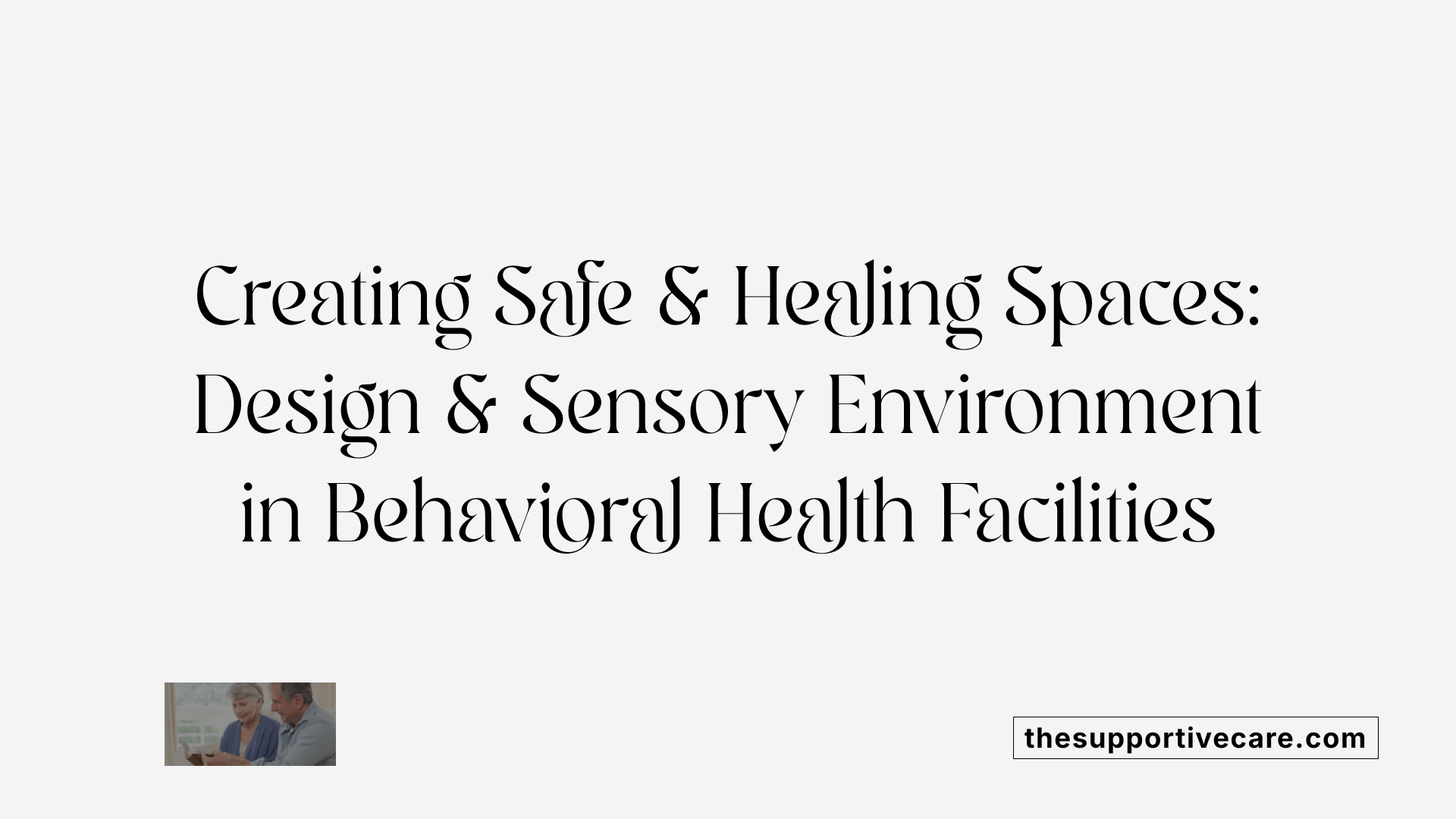
What design considerations, sensory environment features, and safety measures are recommended in behavioral health care environments?
Designing spaces for behavioral health care requires a careful balance between safety, comfort, and promoting healing. Facilities must incorporate safety features such as ligature-resistant fixtures, which include short nurse-call cords, recessed toilet paper dispensers, impact-resistant glazing, and tamper-proof hardware. These features are essential in preventing injury and limiting the potential for harm.
Impact-resistant and durable materials are equally important for furniture, walls, and floors to resist damage and possible weaponization. Use of safety glass, polycarbonate panels, and secure TV enclosures contribute to environmental safety and reduce risks. The environment should also include tamper-resistant and impact-resistant finishes to prevent vandalism or harm.
Environmental risk mitigation extends to strategic room placement, secure and private spaces, and fixtures designed to prevent elopement or self-harm. For example, window operability is restricted, ceilings are designed to prevent climbing, and built-in furniture with doors or drawers in seclusion rooms is avoided.
The sensory environment plays a vital role in patient well-being. Features such as noise control, natural lighting, and access to outdoor views help foster a calming atmosphere. Use of calming colors, soundproofing materials, and layouts that minimize institutional feel are recommended to create a therapeutic setting.
Security measures include clear wayfinding, visual access for staff through cameras and windows, and surveillance systems. These elements help staff monitor residents while respecting privacy. Overall, the design must support dignity, privacy, social engagement, and psychological safety, aligning with trauma-informed principles.
Implementation of guidelines like those from the FGI and ongoing safety assessments—such as the Patient Safety Risk Assessment—are essential steps. Regular review and updates ensure environments continually support safety and therapeutic goals, promoting healing and reducing risks.
| Aspect | Features & Considerations | Purpose |
|---|---|---|
| Safety Fixtures | Ligature-resistant fixtures, impact-resistant hardware, tamper-proof hardware | Injury prevention and tamper resistance |
| Impact Resistance | Durable furniture, impact-resistant glass, secure enclosures | Reduce harm and weaponization |
| Environmental Risks | Removal of ligature points, environmental risk assessments, strategic room planning | Minimize injury and self-harm risks |
| Sensory Environment | Noise control, natural light, outdoor access, calming colors | Enhance psychological well-being and comfort |
| Security & Access | Cameras, staff stations with visual access, restricted window operability | Monitoring and safety without infringing privacy |
In sum, designing behavioral health environments involves a multidisciplinary approach that considers safety, sensory comfort, and trauma sensitivity. Leveraging research, guidelines, and assessment tools helps create spaces that are both safe and healing.
Emergency Response Strategies for Behavioral Health Crises
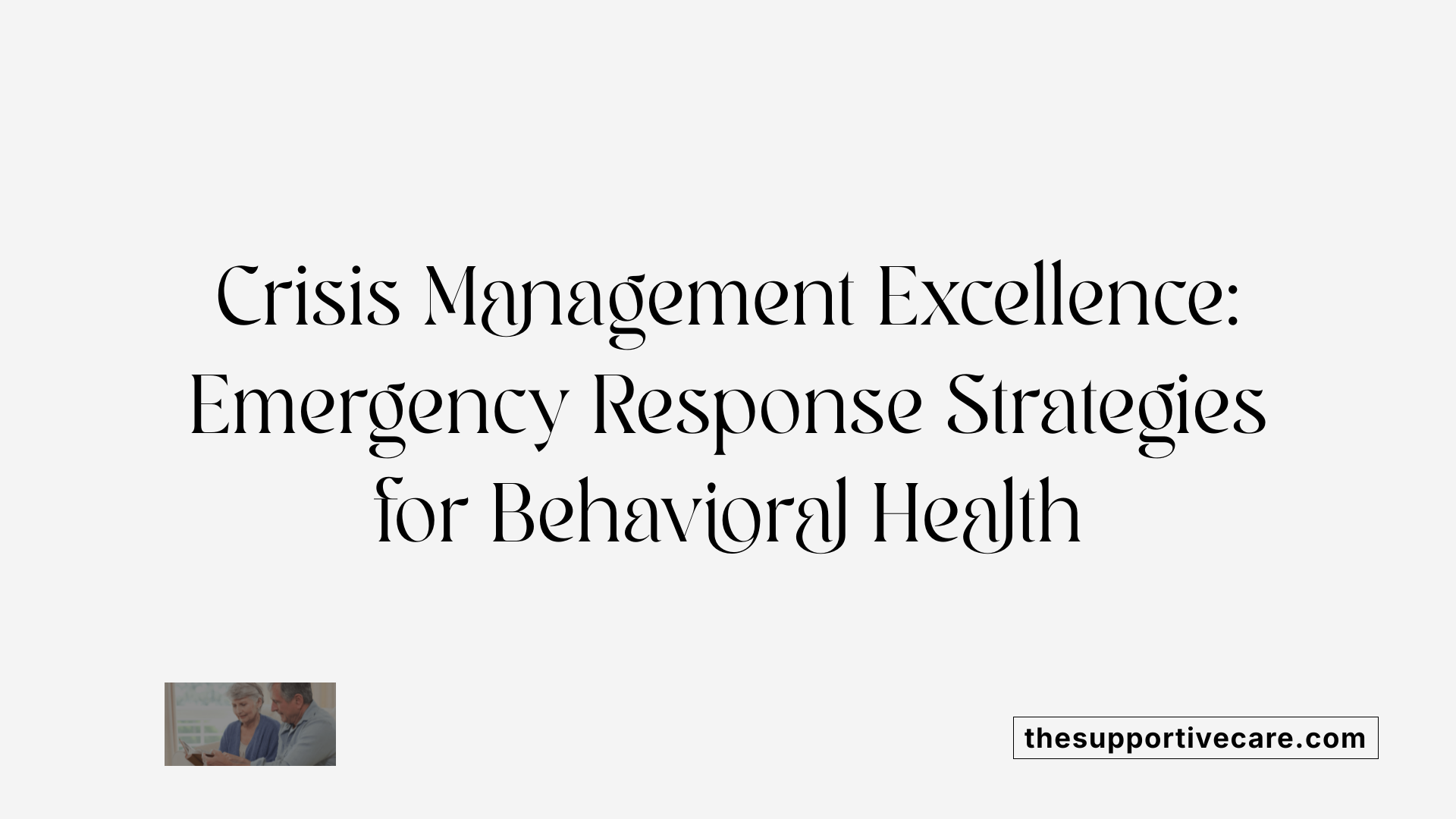
What effective strategies are used for managing behavioral health emergencies across facilities?
Managing behavioral health emergencies requires a comprehensive, coordinated approach. Facilities must develop and implement emergency plans that integrate behavioral health considerations at every stage. This involves training staff in crisis intervention techniques and ensuring that policies promote swift, appropriate responses.
One essential element is the involvement of multidisciplinary teams composed of mental health professionals, emergency responders, law enforcement, and medical staff. These teams work together to assess risk, provide support, and determine the best course of action tailored to each individual.
In addition, establishing crisis intervention teams (CITs) enhances the facility's capacity to respond effectively. These specialized units are trained to de-escalate situations, address underlying issues, and connect individuals with ongoing care.
Early detection and assessment are crucial. Using screening tools and continuous monitoring enables staff to identify behavioral health needs promptly. A thorough assessment helps determine whether the individual requires hospitalization, community-based services, or alternative interventions.
Facilities also focus on incorporating guidance from national agencies like ASPR (Assistant Secretary for Preparedness and Response). This ensures plans are scalable, culturally sensitive, and aligned with legal standards.
Supporting responders through stress management training and psychological resilience programs maintains team effectiveness during crises. Clear communication channels and rapid access to support services like SAMHSA’s Disaster Distress Helpline and Crisis Lifeline provide immediate aid to those in need.
Building collaborative partnerships and conducting regular capacity assessments help keep emergency responses adaptable and comprehensive. Adding behavioral health components into emergency preparedness enhances overall resilience, ensuring that facilities are better equipped to manage crises effectively.
Multidisciplinary Collaboration and Crisis Response
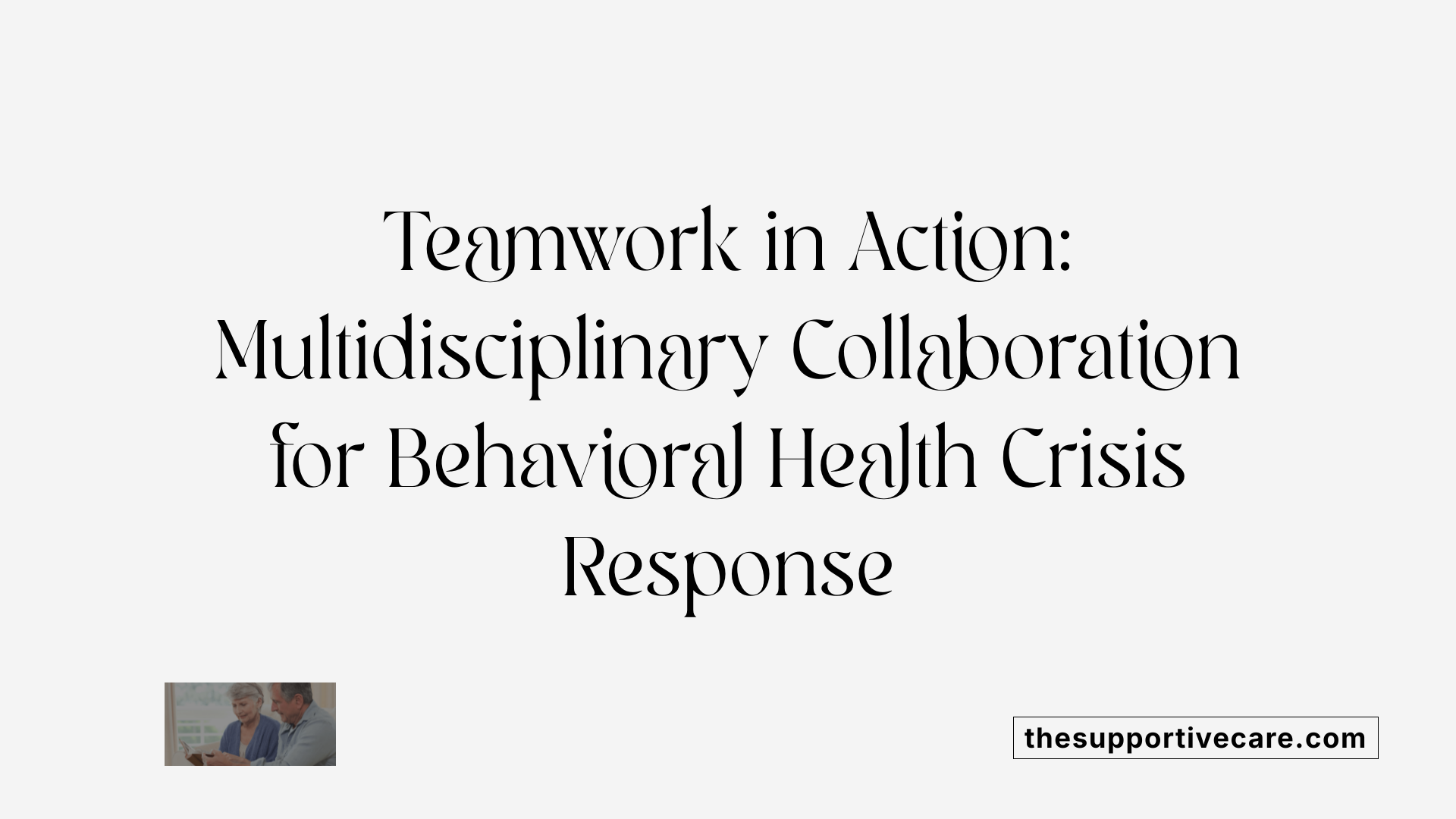
How can multidisciplinary collaboration improve response strategies for behavioral health crises?
Responding effectively to behavioral health crises demands a coordinated approach involving multiple professionals with diverse expertise. Multidisciplinary collaboration enhances crisis response strategies by uniting clinicians, peer support specialists, nurses, crisis intervention workers, and law enforcement in a unified team.
Models like the Collaborative Care Model exemplify how integrated teams can streamline screening, diagnosis, and treatment processes. This collaborative effort enables prompt assessment and stabilization, often through specialized units such as crisis stabilization teams or observation units.
Including various professional roles allows for comprehensive care tailored to individual needs, which can prevent crisis escalation. Peers and community advocates bring valuable lived experience and cultural competence, fostering trust and engagement.
Routine behavioral health screening and measurement-based care are vital in early detection of potential crises. Timely intervention through shared communication and coordinated action reduces delays and improves outcomes.
Overall, team-based, multidisciplinary response systems create a more accessible, efficient, and effective safety net for individuals experiencing behavioral health emergencies, ultimately leading to better health outcomes and higher patient satisfaction.
Modernization and Integration Strategies for Behavioral Health Systems
What comprehensive approaches support the modernization and integration of behavioral health systems?
Modernizing and integrating behavioral health (BH) systems involves multiple coordinated strategies aimed at creating seamless, accessible, and effective care pathways. A primary approach is embedding primary and specialty mental health services within a unified system, allowing for smooth transitions between different levels of care. This often involves innovative Medicaid reimbursement models like the Collaborative Care Model (CoCM), which incentivizes collaborative, team-based care for mental health and SUD (substance use disorder) treatment.
Efforts to develop and expand crisis and urgent care systems play a critical role. Initiatives such as the nationwide 988 Lifeline, mobile crisis response units, and walk-in clinics aim to reduce reliance on emergency departments and incarceration, offering immediate, community-based support. These only form part of a broader strategy to improve response capabilities, including specialized programs for children, youth, and individuals with co-occurring disorders.
Integrated care strategies also emphasize addressing SUD through expanded Medicaid coverage, tailored treatment programs, and recovery supports like housing and employment services. Early intervention tools like SBIRT (Screening, Brief Intervention, and Referral to Treatment) and targeted school-based programs help identify at-risk populations early, facilitating prompt care.
On the policy front, reforms include the development of coordinated crisis response systems, inpatient mental health services, and community outreach efforts. These are often supported by cross-agency collaboration to reduce disparities, improve care quality, and address social determinants of health.
A foundational component of this modernization is the deployment of advanced data systems. Upgrading from legacy systems (e.g., replacing MOTS) to systems that support real-time data sharing and analytics enhances decision-making and resource allocation. Administrative reforms, exemplified by California’s phased Behavioral Health Administrative Integration, aim to streamline state and local operations, improve access, and diminish bureaucratic obstacles.
Federal initiatives complement these state efforts by setting strategic frameworks for equitable, high-quality behavioral health services. Collectively, these comprehensive measures are designed to foster a resilient, person-centered system capable of effectively addressing mental health and substance use challenges across diverse populations.
Resources and Policy Guidance for Behavioral Health Services
Where can official resources, policies, and procedural guidelines related to behavioral health services be found?
Official resources, policies, and procedural guidelines for behavioral health services are accessible through multiple trusted sources. The Behavioral Health Services Act County Policy Manual provides detailed guidance tailored to county-level implementation, helping local agencies and stakeholders understand compliance requirements and best practices.
The Substance Abuse and Mental Health Services Administration (SAMHSA) offers comprehensive, up-to-date national guidelines and frameworks designed to improve crisis care and service delivery. Their resources include protocols for mobile crisis teams, crisis stabilization, and community-based alternatives.
In addition, local community websites, such as those for San Bernardino County, serve as valuable repositories for service guides, provider directories, educational materials, and community-specific policies. These resources ensure that residents and providers are informed about available services and procedural standards.
Finally, government websites at local, state, and federal levels are vital sources for official policies, regulations, and procedural guidelines related to behavioral health. These portals often include legal documents, licensing requirements, safety standards, and updates on recent legislative changes. Accessing these resources ensures that providers and policymakers align their practices with current regulatory expectations and quality standards.
Advancing Safe, Integrated, and Evidence-Based Behavioral Health Environments
Developing effective, facility-wide behavioral health protocols is a complex but essential undertaking that requires adherence to established standards, innovative environmental design, and multidisciplinary collaboration. Regulatory guidance and community-focused policies help ensure equitable access and safety, while structured frameworks provide a solid foundation for system development. By integrating evidence-based practices, modernized data systems, and comprehensive emergency response strategies, facilities can foster safer, more therapeutic, and recovery-oriented environments. Continuous evaluation and adaptation, grounded in best practices and stakeholder input, are vital for sustained improvement. Ultimately, a coordinated and patient-centered approach promotes mental health and well-being across diverse populations, ensuring that facilities are equipped to meet current and future behavioral health needs.
References
- [PDF] Behavioral design strategies - American Hospital Association
- State Strategies to Enhance Behavioral Health Care in Nursing ...
- Structural Components of Integrated Behavioral Health Care
- Behavioral health design regulations | HFM Magazine
- Behavioral Health Facilities Code Update - Engage Kent WA!
- Behavioral Health Emergencies: Protocols and Response Strategies
- Addressing & Improving Behavioral Health - CMS
- Guiding design strategies for behavioral health care - HFM Magazine


